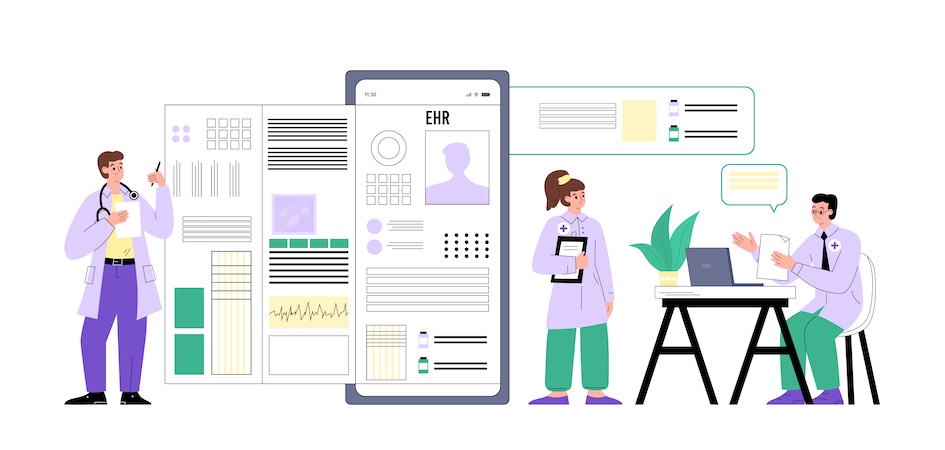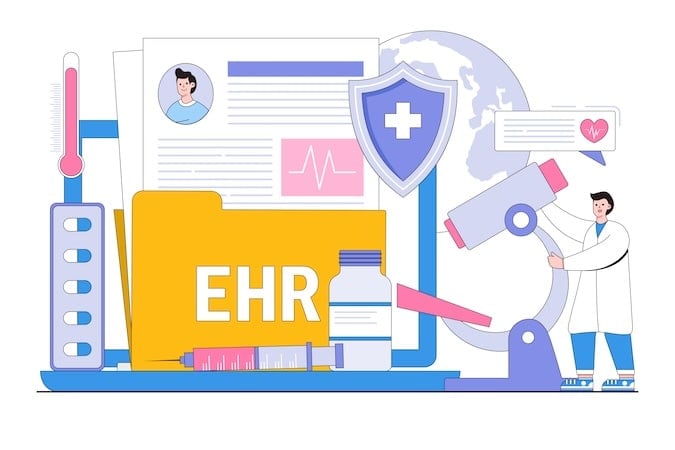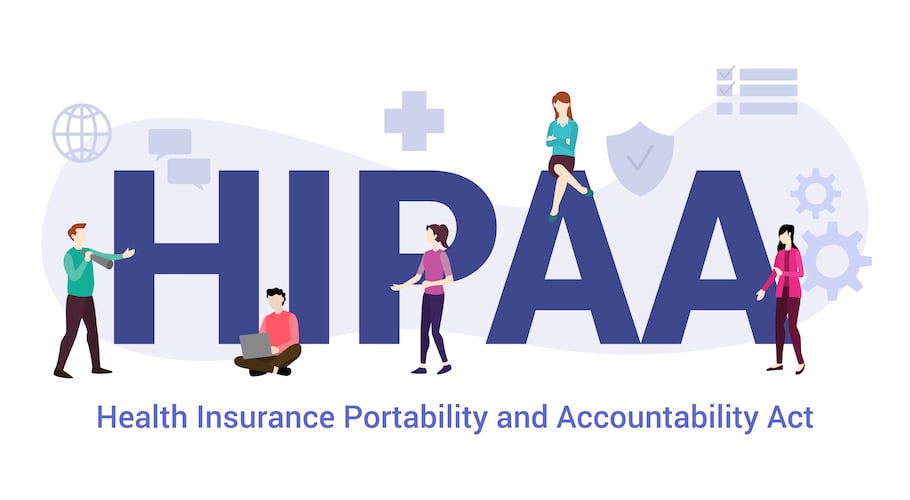Have you ever tried to decipher the EHR implementation cost breakdown? As a clinical executive or a practice owner, you probably understand that the journey to digital transformation in healthcare isn’t just about purchasing software and hardware. It involves a variety of hidden costs that can add up quickly.
The high cost of implementing an EHR system can be daunting, but it’s essential to understand that this investment goes beyond mere dollar signs. It is about improving patient care, enhancing operational efficiency, and, ultimately, saving lives. The question then is, are you ready to uncover these hidden expenses and make an informed decision on your EHR implementation journey?
Top Takeaways:
- The cost of electronic health record implementation is not merely a financial investment. It’s about enhancing patient care, streamlining operations, and ultimately saving lives. It’s like investing in a brighter future for healthcare.
- Implementing ready-made EHR solutions can cost millions for large-scale clinics and hospitals, while smaller practices might spend around $400,000 on average. It’s like choosing between a ready-made suit and a custom-tailored one – the choice depends on your specific needs and budget.
- The cost per physician of EHR implementation for custom solutions can be higher, leading to higher price of implementation overall (from $500,000 to $700,000 for mid-size organizations). However, small hospitals have the option to choose more cost-effective alternatives like a headless EHR or customizing an open-source configuration with minor updates. It’s like finding a sweet spot between quality and cost.
Table of Contents:
- How Much Does Electronic Health Records Maintenance Cost?
- Understanding the TCO of EHR Implementation
- EHR Implementation Cost Breakdown
- Factors Influencing the Cost of EHR Implementation
- Grants, Subsidies, and Incentives Available for EHR Implementation
- Cost-Benefit Analysis of EHR Implementation
- Pricing of the Most Common EHR Systems
- EHR Implementation Challenges and Solutions that Affect Costs
- How to Manage EHR Costs?
- The Benefits of EHRs for Healthcare Providers and Patients
- Regulatory Requirements for EHR Implementation
- Topflight’s Track Record
How Much Does Electronic Health Records Maintenance Cost?
Understanding the long-term financial commitment of maintaining an EHR system is crucial for any healthcare organization. The EHR maintenance cost can significantly impact your budget and operational efficiency. Here’s what you need to know:
EHR Maintenance Cost Composition
Software Updates ($3,000–$7,000 per year)
Regular updates are essential to keep your EHR system compliant with industry standards and regulations. These updates also include new features and security patches to protect sensitive patient data. Especially for systems with regular security patches, interoperability updates (think FHIR compliance tweaks), and UI improvements. Cloud-based vendors often roll this into their subscription, but on-prem setups pay à la carte.
Technical Support ($5,000–$10,000+ per year)
Ongoing technical support ensures that any issues or bugs are promptly addressed, minimizing downtime and disruption to your practice. This varies based on vendor SLAs. 24/7 support with short response windows comes at a premium. Smaller clinics may pay less (~$2K–$4K), while large systems with priority queues pay more.
Training and Development ($500–$1,200 per user per year)
Continuous training for your staff ensures they remain proficient with the EHR system, leading to more efficient use and better patient outcomes. A 50-person clinic may shell out $25,000+ annually if they invest heavily in reducing user friction.
Hardware Upgrades ($10,000–$30,000 every 3–5 years for on-prem setups)
As technology advances, periodic hardware upgrades may be necessary to support new software requirements and enhance system performance. Includes server upgrades, workstations, backup systems. Cloud EHRs shift most of this cost away from the customer. For on-prem setups, you may still have peripheral hardware (scanners, biometric logins, etc.).
Estimating the Annual EHR Maintenance Pricing
On average, healthcare organizations can expect to spend approximately 15-20% of the initial EHR implementation cost on annual maintenance. For instance, if your EHR software cost $100,000 to implement initially, you should budget around $15,000 to $20,000 per year for maintenance.
By the way, keep in mind that maintenance costs tend to be higher in the first year after setting the platform up as staff are still learning the new system. So, budget in 20-25% of the initial EHR implementation cost for 1-year maintenance after implementation.
Factors Influencing EHR Maintenance Costs
System Complexity
More complex systems with extensive features and integrations typically incur higher EHR system cost.
- Low complexity (basic EMR): ~$10,000–$15,000/year in maintenance
- High complexity (with lab integrations, eRx, API access): ~$25,000–$50,000+/year
Insight: Every custom workflow, integration, or module you add (e.g., patient portal, revenue cycle management) increases the maintenance footprint.
Vendor Support Levels
Different vendors offer varying levels of support, which can influence your overall maintenance expenses.
- Basic support (business hours only): $3,000–$5,000/year
- Premium support (24/7, priority): $10,000–$20,000/year
Insight: Some vendors use tiered models (Silver, Gold, Platinum), where faster support times and named account reps raise the bill.
User Base Size
Larger organizations with more users generally require more extensive support and training, leading to higher costs.
- Small practice (1–10 users): ~$5,000–$10,000/year
- Mid-size (50 users): ~$20,000–$30,000/year
- Enterprise (100+ users): $50,000–$100,000+/year
Insight: Pricing often scales per seat or concurrent user license. Training and support costs rise with headcount.
Practical Advice for Managing EHR Maintenance Pricing
To effectively manage EHR pricing related to the platform maintenance:
Negotiate with Vendors
Ensure your contract includes comprehensive maintenance and support services. Negotiate terms that cover essential updates without additional charges.
Regular Reviews
Periodically review your EHR system’s performance and maintenance needs to identify areas for cost-saving improvements.
Invest in Training
Focus on regular training sessions for your staff to maximize efficiency and minimize costly errors or downtime.
Cloud-based vs. on-premise
Cloud EHR systems may have lower maintenance costs compared to on-premise solutions, as the vendor handles much of the infrastructure and updates.
| Deployment Type | Typical Annual Maintenance Cost | Notes |
|---|---|---|
| Cloud-based | 10–15% of implementation cost (e.g., $10K–$15K/year for $100K setup) | Lower upfront costs, updates included, minimal IT staff needed |
| On-premise | 20–25% of implementation cost (e.g., $20K–$25K/year for $100K setup) | Includes physical hardware maintenance, IT personnel, manual updates |
By understanding and planning for these ongoing costs, healthcare organizations can ensure their EHR systems remain effective and up-to-date without unexpected financial burdens.
Understanding the Total Cost of Ownership (TCO) of EHR Implementation
When adopting a new EHR system, especially in primary care, it’s essential to understand the total cost of ownership (TCO). The TCO goes beyond the initial purchase price and encompasses the entire lifecycle of the EHR system, including implementation, operation, and maintenance costs. This is a critical aspect of information technology investment decisions in healthcare.
EHR costs can be substantial, but they are not one-size-fits-all. They vary based on several factors. For example, larger practices may expect to pay more due to the higher number of users, but they also benefit from economies of scale. The costs per user can be lower in larger practices compared to smaller ones.
The average cost of EHR system can significantly differ depending on these variables, impacting the overall budgeting and financial planning for the practice.
The cost of training office staff is another significant factor. It’s not just about learning how to use the new system; it’s also about adjusting to new workflows and procedures. This transition can have a temporary impact on the revenue cycle as staff adapt to the new EHR system.

Moreover, the TCO may include other expenses such as system upgrades, ongoing support, and potential disruptions to productivity during the transition phase. Therefore, when calculating the TCO, healthcare providers should factor in these additional costs.
Despite the significant upfront investment, the return on investment from EHR deployment can be substantial. Improved efficiency, increased productivity, better patient outcomes, and streamlined operations are just a few of the benefits that can offset the initial EHR costs. Therefore, the true value of EHR implementation can only be realized by looking at the big picture – the total cost of ownership and the long-term benefits.
With a clear understanding of all the hidden expenses, your journey towards successful EHR implementation can be smoother and more cost-effective.
EHR Implementation Cost Breakdown
One question that undoubtedly pops up as you approach an EHR implementation project is, “What is the average cost of EHR implementation in a hospital?” Well, let’s break it down. The overall cost of implementing electronic health records in hospitals can be divided into several categories: software costs, hardware costs, training, integration and testing, and upkeep.
Software Costs
The cost of an EHR platform can vary significantly depending on whether you opt for ready-made solutions or custom-built EHR solutions. The average cost of EHR software is a critical factor to consider when budgeting for your implementation project.
Ready-made Solutions
Ready-made EHR solutions are essentially off-the-shelf software that is pre-built and ready to use. While these can be more cost-effective upfront, they may not offer the customization options needed to fit your specific healthcare facility needs. The average cost of hospital EHR implementation using ready-made solutions counts in the millions of dollars. For smaller medical practices, it’s around $300,000 on average.
Custom EHR Solutions
On the other hand, custom EHR solutions are tailored to your specific requirements and can provide a more seamless fit with your existing workflows and systems. However, the average cost of EMR implementation for custom solutions is generally higher, coming in at around $500,000 – $700,000 for mid-size organizations.
Also Read: App Development Costs: The Complete Breakdown
Please note that a custom implementation might involve leveraging an affordable off-the-shelf EHR configuration while developing a tailored application (e.g., an AI-powered health data analysis tool) on top of it. Alternatively, providers could consider using a headless EHR or customizing an open-source configuration with minor updates. These approaches offer the greatest cost-efficiency.
When purchasing a system from an EHR vendor, it is important to make a cost comparison between different products in order to ensure that you are getting the best value for your money.
Hardware Costs
Hardware costs are also a significant part of the budget. These can vary depending on the size of the healthcare facility and the specific requirements of the EHR system. For instance, a larger hospital might require more robust servers or additional mobile devices (maybe even non-standard desktop computers) for staff members.
Large-scale providers usually incur higher costs as they have to maintain a local EHR instance, which involves additional expenses for self-hosted servers and network infrastructure. Whereas smaller organizations and practices may do just with cloud-based SaaS EHR versions – a more cost-effective option.
Training Costs
When it comes to EHR, the adage “knowledge is power” could not be more applicable. Implementing a new EHR system isn’t simply about acquiring new software; it’s about ensuring that your healthcare personnel – administrators, nurses, doctors, operators, and others – are adequately trained to use it effectively. But what does this training entail, and at what cost?
Training costs encompass a variety of factors. Firstly, there’s the cost of developing and conducting training sessions themselves. This could involve hiring external consultants or dedicating internal resources to create an effective training program. Next on the list is the cost of training materials. Whether these are printed booklets or digital manuals, they come with costs that need to be factored in.
Moreover, consider the time costs. Every hour your medical personnel spend in training is an hour away from providing patient care. This indirect cost, often overlooked, can significantly impact your overall training expenses.

The average cost for EHR training can vary widely, but a ballpark estimate is around $1,200 per end user. It’s crucial to remember, however, that the success of the EHR implementation hinges on the effectiveness of this training. Skimping on training costs may lead to a less efficient use of the EHR system, potentially undermining the benefits of its implementation.
Integration and Testing Costs
Integration and testing costs are other crucial factors to consider. The complexity of the integration and testing process can impact the overall cost of implementation. This includes the cost of integrating the EHR system with your existing software and systems, as well as thorough testing to ensure everything works seamlessly.
It’s important to consider the overall EHR price, including these integration and testing expenses, to get a clear picture of the total investment required.
Check out our EHR integration services
Maintenance and Support Costs
Lastly, let’s not forget about the upkeep. An EHR system isn’t a one-time purchase. It requires ongoing maintenance and support to ensure it continues to operate effectively and securely. The typical support and maintenance costs related to EHR implementation are typically in the range between $60,000 and $100,000 per year, and depend a lot on the size of a healthcare business. Such costs are typically higher during the first year after EHR implementation while your team is still learning to use the new system.
So, there you have it – a comprehensive breakdown of the costs associated with EHR implementation.
Factors Influencing the Cost of EHR Implementation
As you already understand, the answer to the question “How much does an EHR implementation cost?” is not as straightforward as you might think. The overall cost of implementing an EHR system in practice can vary greatly due to several factors. Let’s take a closer look at what these are.
Size of a Healthcare Provider
Firstly, the size of a healthcare provider plays a significant role. For instance, the cost of implementing electronic medical records in a large hospital will differ from that in smaller skilled nursing facilities. The larger the facility, the more complex the EHR system needs to be (with a greater number of users) to cater to the higher patient volume and diverse needs, thereby increasing the current cost.
Complexity of Existing Systems
Secondly, the complexity of your current systems can also affect the cost. Do you have multiple systems that need to be integrated with the EHR? If so, this could add to the integration and testing costs. However, partnering with an experienced software development company can help cut these costs by ensuring efficient and seamless integration.
Customization Requirements
Next, let’s consider customization requirements. No two healthcare providers operate in the same way, which means no two EHR systems should be identical. If you require specific features tailored to your workflows or if you’re acquiring special modules like pharmacy management, the cost will likely be higher. But remember, electronic medical records’ worth lies in their ability to streamline operations, improve efficiency, and enhance patient care.
Location Factors
Lastly, location factors such as local labor rates and cost of living can influence EHR implementation costs. For example, healthcare providers in regions with higher labor rates may experience higher costs for training and support services.
The cost of EHR programs can be significantly impacted by these location-specific expenses, making thorough financial planning essential.
Many healthcare providers outsource EHR implementation to cut costs. Hiring developers from regions with lower labor costs can result in substantial savings. However, regulatory compliance is crucial. Regardless of developer location, your EHR must comply with U.S. healthcare regulations like HIPAA, HITECH, and Meaningful Use.
Non-compliance can lead to penalties and compromise patient data security, negating outsourcing savings. Therefore, partnering with U.S. developers familiar with these regulations offers advantages. They understand U.S. healthcare regulations and landscape, streamlining integration and avoiding pitfalls.

With on-shore healthcare app development services, you can ensure a successful implementation of your EHR system, improving not only your operations but also the quality of care you provide to your patients.
So, as you can see, numerous factors can influence the final price tag of EHR implementation. But don’t let this deter you from making the switch. The benefits of EHRs far outweigh the costs, and with the right partner like Topflight, you can ensure a smooth, cost-effective transition to a more efficient, patient-centered care approach.
In the next section, we’ll explore some ways to offset these costs through grants, subsidies, and incentives available for EHR implementation.
Grants, Subsidies, and Incentives Available for EHR Implementation
Just like a seasoned sailor navigating the high seas, embarking on the journey of implementing an EHR system requires a solid financial plan. While the approximate cost of implementing an EMR system can seem quite hefty, did you know there are numerous grants, subsidies, and incentives that can help ease the burden?
Grants: Your Financial Lifeboat
Various government agencies and organizations offer grants specifically for EHR implementation. These grants can provide financial assistance to healthcare providers, especially those in underserved areas or with limited resources. Think of them as your financial lifeboat in the vast ocean of EHR implementation costs.
Subsidies: The Wind In Your Sails
In addition to grants, there are subsidies available that can help reduce the average cost of implementing an EHR system in hospitals. The cost of EHR for hospitals can be significantly offset by these subsidies, making it easier for healthcare providers to invest in this crucial technology.
These subsidies are often provided by government programs or healthcare organizations and can cover a portion of the expenses associated with purchasing and implementing an EHR system. They can be the wind in your sails, propelling your implementation team towards successful EHR adoption.
Incentives: The Treasure Chest
Lastly, the government also offers incentives to encourage healthcare providers to adopt EHR systems. The most well-known incentive program is the Medicare and Medicaid EHR Incentive Programs, also known as the Meaningful Use program. Eligible providers who meet certain criteria can receive financial incentives for implementing and demonstrating meaningful use of certified EHR technology. It’s like discovering a treasure chest amidst the costly endeavor of EHR implementation.
Now, you might be thinking, “This sounds great, but how do I navigate these opportunities?” That’s where an experienced software development company like Topflight comes in. With our expertise in healthcare apps and EHR implementations/integrations, we can guide you through the process of identifying and applying for these grants, subsidies, and incentives, ensuring that you maximize your benefits.

So, while the journey to EHR implementation may seem daunting, remember that there are resources available to help offset the costs. With the right partner and a clear roadmap, you can successfully navigate the high seas of EHR implementation, ensuring a smoother, more cost-effective transition to digitized patient care. Stay tuned for our next section, where we’ll delve into the cost-benefit analysis of EHR implementation.
Cost-Benefit Analysis of EHR Implementation
Are you wondering, “How much does it cost to implement an EHR system?” While there’s no one-size-fits-all answer, it’s crucial to conduct a thorough cost-benefit analysis to truly understand the financial implications. But it’s not just about understanding the true costs – it’s also about identifying and quantifying the potential benefits. Let’s delve into some key factors to consider:
Improved Efficiency
Did you know that EHR systems can streamline your workflows, reduce paperwork, and automate repetitive tasks? These benefits lead to improved efficiency and productivity. It’s like having an extra set of hands, helping you manage your workload more effectively.
Enhanced Patient Care
Here’s an interesting fact: EHRs provide access to comprehensive patient information in real-time, enabling healthcare providers to make more informed decisions. This leads to better quality care, improved patient outcomes, and higher patient satisfaction rates.
Reduced Costs
While it might seem counterintuitive, implementing an EHR system can actually lead to long-term cost savings. How? By eliminating paper-based processes, reducing errors, and improving billing and reimbursement processes. It’s like giving your budget a much-needed health check!
Regulatory Compliance
Regulatory compliance is a huge concern for healthcare providers. The good news is EHR systems can help you meet these requirements, avoiding penalties and potential legal issues. It’s like having a safety net protecting you from regulatory pitfalls.

Improved Data Security
In this digital age, data security is paramount. With EHRs, you get better data security measures compared to paper records, reducing the risk of data breaches and unauthorized access. It’s like having a digital lockbox for your sensitive patient information.
By considering these factors and conducting a comprehensive cost-benefit analysis, you can determine whether the benefits of EHR implementation outweigh the costs for your specific healthcare organization.
For health app founders and clinical executives alike, our piece on developing SMART on FHIR apps delves into best practices, common challenges, and expert tips to enhance your development process and achieve seamless integration with EHR systems.
Pricing of the Most Common EHR Systems
Understanding the cost structure of various EHR systems is essential for decision-makers aiming to optimize their investment in healthcare technology.
Below is a detailed overview of the pricing for some of the most common EHR systems, highlighting their electronic medical records software cost, monthly subscription fees, and other relevant factors for small practices and larger institutions.
Overview of EHR System Pricing
Epic
Epic’s pricing varies significantly based on organizational size and deployment type. For self-hosted implementations, costs typically start at $1,200 per user, but enterprise-level installations for large hospitals can start around $500,000 and climb into the millions. There’s no free trial, but a demo is available.
Cerner
Cerner offers both cloud-based and on-premise solutions. For smaller practices using cloud-hosted services, pricing can start as low as $25 per user per month. On-premise deployments vary widely and require custom quotes. No free trial is available.
Allscripts
Allscripts provides customizable EHR solutions for different practice sizes, but pricing is not publicly disclosed. Interested buyers must contact sales for quotes. It does not currently offer a free trial.
eClinicalWorks
eClinicalWorks uses a subscription model. EHR-only packages start at $449/month, while bundled EHR + practice management solutions cost $599/month. Their revenue cycle management option is priced at 2.9% of monthly collections. This makes it a popular choice for outpatient clinics and small practices.
Athenahealth
Athenahealth provides a cloud-based EHR system with monthly pricing ranging from $150 to $300 per provider, depending on selected features and services. The platform doesn’t offer a free trial but is known for ease of onboarding.
Meditech
Meditech offers both perpetual licenses and subscription pricing. Monthly subscription rates range from $200 to $500 per user, depending on the configuration. Meditech focuses more on medium to large hospitals, often requiring upfront training and support contracts.
NextGen
NextGen’s cloud-based EHR pricing starts at $299 per provider/month for nurses and $379 per provider/month for physicians. It’s tailored for small to mid-size practices, with flexible modules for specialty workflows and compliance tools.
| Vendor | Self-Hosted/On-Premise | Cloud-Based/Subscription | Additional Notes |
| Epic | Starts at $1,200 per user | For large clinics: Starts at $500,000 | No free trial, free demo available |
| Cerner | Varies based on deployment | $25 per month per user | No free trial offered |
| Allscripts | Contact for pricing | Not disclosed | No free trial offered |
| eClinicalWorks | N/A | $449/month (EHR), $599/month (EHR + Practice Management) | RCM: 2.9% of collections |
| Athenahealth | N/A | $150-$300 per user/month | N/A |
| Meditech | N/A | $200-$500 per user/monthly | N/A |
| NextGen | N/A | $299 per provider/month (nurses), $379 per provider/month (physicians) | N/A |
Key Considerations for EHR Pricing
Practice Size
Costs vary significantly depending on whether the practice is small or large. Small practices might opt for more affordable, cloud-based solutions with lower per-month fees.
- Small practices (1–5 providers): Can expect to pay $300–$700 per provider per month for cloud-based EHRs like Athenahealth, eClinicalWorks, or Kareo. Initial setup fees may be as low as $2,000–$5,000, or waived entirely.
- Mid-size practices (10–50 providers): Typical costs range from $30,000–$100,000+ for setup, with monthly fees scaling to $3,000–$15,000, depending on services and user count.
- Enterprise clinics/hospitals: Setup can exceed $500,000 to several million dollars (e.g., Epic), with ongoing costs in the hundreds of thousands annually, including integration and IT overhead.
Customization and Features
Additional features and customizations can increase the cost. For instance, integrating practice management or revenue cycle management with EHR will incur additional charges.
Basic EHR + patient portal: Typically included in base pricing
Add-ons like RCM, telehealth, eRx, or custom dashboards: Can add $100–$300/month per provider, or flat fees of $5,000–$25,000 for one-time integrations.
Custom APIs or third-party system integrations: May cost $10,000–$50,000+, especially when aligning with specialty workflows or hospital information systems.
Deployment Type
Self-hosted solutions generally require a higher upfront investment compared to cloud-based subscription models, which spread costs over time.
Cloud-based (subscription model):
- Setup: $0–$10,000
- Monthly: $300–$700/provider
Self-hosted/on-premise:
- Setup: $100,000–$500,000+
- Annual maintenance: 20–25% of setup cost
- Hardware + IT staffing: $50,000+/year
Long-Term Costs
Beyond the initial setup, consider long-term expenses such as maintenance, updates, training, and data migration. The total cost of ownership (TCO) over several years often exceeds the initial licensing or subscription fees.
- Training & onboarding: $500–$1,500 per staff member annually
- Upgrades & patches: $5,000–$15,000/year
- Data storage, backups, and security: $2,000–$10,000/year depending on system volume
- 5-year TCO (for a mid-size clinic): Often reaches $250,000–$500,000, even if initial cost was only ~$100,000
Hidden Costs
Be aware of potential hidden costs, including those related to data migration, interoperability with other systems, and ongoing support.
- Data migration: $5,000–$50,000 depending on EHR complexity and volume of records
- Interoperability (e.g., HIE or FHIR API fees): $1,000–$10,000+ annually per integration
- Support & SLAs not in base contract: $5,000–$15,000/year for premium tiers
- Contract exit & data export fees: Some vendors charge $3,000–$10,000+ for structured data exports or compliance handoffs
Read more on EHR data migration
Practical Advice for Selecting an EHR System
When selecting an EHR system, it’s crucial to:
Request Detailed Quotes
Contact vendors directly for a comprehensive quote tailored to your specific needs.
Evaluate Total Cost of Ownership
Consider all associated costs over the system’s lifecycle, not just the initial price.
Assess Vendor Support
Ensure the vendor offers robust support options to address any technical issues quickly and efficiently.By understanding the nuances of EHR pricing, you can make informed decisions that align with your organization’s budget and operational requirements.
Hopefully, EHR software prices are no longer a surprise for you, now.
EHR Implementation Challenges and Solutions that Affect Costs
Ever find yourself wondering, “What hurdles might I face while navigating the EHR implementation journey?” The answer lies in understanding common challenges that could impact your EHR implementation cost estimate. Let’s dive in:
Resistance to Change
Change, while often beneficial, can be daunting, right? It’s no different when it comes to EHR implementation. Resistance from staff can lead to delays and increased costs. The solution? Get everyone on board early, provide comprehensive training, and communicate the benefits. This will smoothen the transition and keep costs in check.
Data Migration and Integrations
Imagine having to move mountains. That’s what migrating data from old systems and integrating with new ones can feel like. Complex and time-consuming, this task can inflate the costs. But fear not because partnering with experienced EHR implementation partners like Topflight can streamline this process and reduce costs.
Workflow Disruptions
How would you feel if someone turned your world upside down? Implementing EHR can cause disruptions in established workflows, leading to temporary productivity dips and potential revenue loss. But with careful planning and adequate support, we can minimize these disruptions, ensuring a smooth transition.
Customization and Configuration
Wouldn’t it be great if everything could be tailored to your needs? Healthcare organizations often have unique requirements warranting customization of the EHR system. However, customization can increase implementation costs. Striking a balance between customization and cost-effectiveness is crucial. With Topflight’s experience in developing custom EHR solutions, we can help optimize costs while meeting specific needs.
Read our guide on how to choose an EHR system.
Vendor Selection
Choosing the right partner is like finding the perfect dance partner, isn’t it? The wrong choice can lead to cost overruns and compatibility issues. Making an informed decision based on the vendor’s experience, track record, and ability to meet specific requirements is key. As a seasoned player in EHR implementations, Topflight can be your reliable partner.By understanding these challenges and implementing effective solutions, you can keep a lid on costs and ensure a successful EHR implementation.
How to Manage EHR Costs?
Effectively managing the cost of electronic health records is vital for healthcare organizations aiming to maximize their investment without compromising functionality. Here are practical strategies to help decision-makers control and optimize EHR expenses.
1. Evaluate Total Cost of Ownership (TCO)
Before buying an EHR system, assess the total cost of ownership over its lifespan. This includes not just the initial purchase price but also:
- Implementation Costs: Expenses related to system setup, data conversion, and customization.
- Maintenance Costs: Ongoing fees for software updates, technical support, and hardware upgrades.
- Training Costs: Continuous education for staff to ensure efficient use of the system.
2. Opt for Scalable Solutions
Choosing a scalable EHR system allows your organization to start with essential features and expand as needed. This approach ensures that you only pay for capabilities you currently require while preserving the option to EHR upgrade as your needs evolve.
3. Leverage Community Resources
Join healthcare IT communities and forums to share experiences and insights with peers. These platforms can provide valuable advice on cost-effective practices and vendor negotiation tips. Networking with other healthcare providers can also lead to bulk purchasing opportunities, further reducing costs.
4. Negotiate with Vendors
When negotiating contracts, aim for terms that include comprehensive maintenance, support services, and future upgrades. Seek clarity on any hidden costs, such as those associated with additional users, data storage, or integration with other systems. Don’t hesitate to ask for discounts or bundled packages to lower your overall expenses.
5. Monitor and Optimize System Usage
Regularly review your EHR system’s performance and usage to identify areas for cost-saving improvements. For example:
- Eliminate Redundancies: Remove unnecessary features that incur additional costs.
- Optimize Workflows: Streamline processes to enhance efficiency and reduce time spent on administrative tasks.
- User Feedback: Collect and act on feedback from staff to ensure the system meets their needs effectively.
6. Plan for Long-Term Growth
Consider how your organization’s growth will impact EHR costs. As you expand, the number of users, volume of data, and need for advanced functionalities will increase. Ensure your EHR system can scale accordingly without incurring disproportionate expenses.
7. Invest in Training
Investing in continuous training ensures that all users are proficient with the EHR system, minimizing errors and maximizing efficiency. Well-trained staff can make better use of the system’s features, reducing the need for costly corrections and support interventions.
Practical Tips for Budget Management
- Conduct Regular Audits: Periodically audit your EHR system’s expenses to ensure they align with your budget.
- Utilize Cost-Benefit Analysis: Regularly perform cost-benefit analyses to evaluate the return on investment (ROI) of your EHR system.
- Explore Cloud-Based Solutions: Consider cloud-based EHR systems, which typically offer lower upfront costs and flexible pricing models based on usage.
By implementing these strategies, healthcare organizations can manage the cost of electronic health records effectively, ensuring they receive maximum value from their investment while maintaining high-quality patient care.
The Benefits of EHRs for Healthcare Providers and Patients
When considering the approximate cost of implementing EHR systems, it’s vital to weigh in the numerous benefits EHR software brings to healthcare providers and patients.
- Improved Access to Patient Information
- Reduced Documentation Errors
- Enhanced Quality of Care
- Secure Storage and Privacy
- Streamlined Operations
- Better Communication
While these benefits present a compelling case for EHR adoption, it’s crucial to partner with an experienced provider for your EHR implementation project. Considering the cost of EHR systems alongside these benefits ensures a balanced view when making this significant investment.
Partnering with someone who understands the unique requirements of the healthcare industry and can tailor an EHR to meet your specific needs ensures you reap the full benefits of the platform.
When considering the costs and benefits of this transition, partnering with a reliable EHR software development company can make a big difference in ensuring a return on your investment.
Regulatory Requirements for EHR Implementation
When considering the estimated cost of implementing an EHR in a hospital or long-term care facility, it’s easy to focus on the obvious expenses, such as software and hardware. But have you ever paused to consider the regulatory requirements that come with EHR implementation? The truth is these regulations play a significant role in the overall costs of using and implementing electronic health records.
HIPAA Compliance
One such regulation is the Health Insurance Portability and Accountability Act (HIPAA), a mandatory standard for protecting patient health information. These regulations are not just about compliance; they’re about patient trust. After all, would you trust your health information with a provider who doesn’t prioritize its security?
Also Read: HIPAA Compliant App Development Guide
Meaningful Use
Another critical regulation to bear in mind is Meaningful Use. This isn’t just a buzzword but a program established by the Centers for Medicare and Medicaid Services (CMS) that incentivizes healthcare providers to adopt and use certified EHR technology. To qualify , providers must meet specific criteria related to the use of EHRs, such as capturing and sharing patient data electronically and using clinical decision support tools.

And let’s not forget about interoperability standards like the Health Level Seven International (HL7) standards. Imagine a world where different EHR systems speak the same language, allowing seamless communication and exchange of patient data. That’s what HL7 aims to achieve.
It’s important to note that these regulatory requirements can add to the overall cost of EHR software, making thorough budgeting essential.
How to Factor “Regulatory Costs” into Your Budget for EHR Implementation?
When you partner with a software development shop that specializes in healthcare applications, such as Topflight, these regulatory requirements are already baked into the development process. They possess a team of developers well-versed in healthcare regulations like HIPAA and Meaningful Use, rigorously ensuring compliance at every step. Securing the development, testing, and live environments is part of their standard protocol, ensuring the security of EHR data throughout the entire implementation process.
In contrast, if you were to handle this in-house, you would need to invest in a highly skilled team of developers knowledgeable in these regulations and secure the local/cloud infrastructure yourself, potentially driving up costs and complicating the implementation process.
Topflight’s Track Record: Real-World Success Stories
With years of experience under our belt, we at Topflight have successfully navigated the complex waters of EHR implementation and integrations for numerous healthcare organizations. We work with popular EHR platforms like Athena, Epic, Cerner, and Allscripts, as well as open-source solutions like Medplum or Healthie, among others. Here are some of the notable use cases.
Read about Allscripts EHR integration
Streamlining Workflow for a Healthcare Organization in Chattanooga
We worked closely with the facility’s IT team and a teleradiology group to integrate multiple PACS, billing, and partner facilities. This integration created a streamlined workflow for radiologists to remotely read studies. The Epic integration included
- ADT messaging to necessary billing systems,
- orders (ORM) messaging to multiple downstream systems for PACS and other sister facilities,
- and solicited results (ORU) for posting radiologist readings to Epic and completing imaging orders.
Customized Care Team Dashboard for a Texas Healthcare Organization
We collaborated with the vendor to build a customized care team and executive web dashboard for patient census and appropriate level of care management. The Epic ADT integration included
- evaluation of hospital service levels,
- Diagnosis Resource Group (DRG) coding,
- and inpatient location.
Additionally, Epic discharge order (ORM) integration was used for predictive census and bed-board teams to improve ED to inpatient workflow.
Also Read: Top 18 Telehealth Apps for Doctors and Patients
Interoperability Case Study for a Healthcare Start-Up
Our client was a healthcare start-up focused on creating a clinical summary based on patient responses to surveys prior to appointments with physicians. We helped identify survey types and questions for patients based on their clinical history and physician specialty. We also provided the ability for physicians to
- send surveys to patients,
- present dynamic questions based on EHR data and patient responses,
- and smartly compose patient responses to create a Progress Note to be sent back to the EHR.
As healthcare providers explore digital solutions, learning how to build a healthcare app that integrates seamlessly with their EHR system can provide a significant competitive advantage.
Wrapping Up
When considering the costs of implementing an EMR, it’s crucial to evaluate the price comparison of various solutions and the value they bring to your organization.At Topflight, we are committed to providing you with the best possible EHR solution that caters to your unique needs while keeping costs in check. So, are you ready to take the next step towards a more streamlined, cost-effective healthcare delivery system? Let’s move forward together!
[This blog was originally published on 1/8/2024 and has been updated with more recent content]
FAQ
What is the average cost of implementing an EHR system?
The overall cost varies significantly based on several factors, such as the type of software, hardware costs, training expenses, system integration and testing fees, and ongoing maintenance and support costs. For ready-made EHR solutions, hospitals might need to budget in the millions, while smaller practices may spend around $300,000 on average.
Are there any cost-effective alternatives for small hospitals?
Yes, indeed! Small hospitals can explore more budget-friendly options like a headless EHR or customizing an open-source configuration with minor updates. These alternatives offer the best of both worlds – cost-efficiency and customization to meet the unique needs of the organization.
How can regulatory costs be factored into my budget for EHR implementation?
When you partner with a specialized software development company, they ensure compliance with healthcare regulations like HIPAA and Meaningful Use at every stage of the development process. This saves you from investing in a separate team of developers and securing local/cloud infrastructure, which could potentially increase your costs and complicate the implementation process.
Can you provide a breakdown of the cost of a hospital EMR implementation?
Absolutely! The cost of hospital EMR implementation involves various components. Firstly, there are software and hardware costs, which can range widely based on whether you opt for a ready-made or custom solution. Then, there are training costs for your staff, integration and testing fees, and ongoing maintenance and support costs. Additionally, you also need to consider regulatory costs to ensure compliance with healthcare regulations. By understanding these upfront costs, you can budget effectively and navigate the EHR implementation journey smoothly.